
Explanation on how to determine compound probability and express compound probability as a set and subset
- Subject:
- Mathematics
- Material Type:
- Unit of Study
- Provider:
- Cengage Learning
- Date Added:
- 01/22/2018

Explanation on how to determine compound probability and express compound probability as a set and subset

Worksheet on conditional probability.
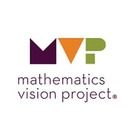
The purpose of this task is for students to determine if two events are independent. In this task, students are asked to interpret the amount of fish and chicken Freddy should prepare on any given day. The goal is for students to recognize that Freddy sells more food on a weekend day than he does on a weekday, however, the percentage of each food type stays the same. In other words, the likelihood that a randomly selected customer would order chicken is independent as to whether or not it is a weekday or a weekend.
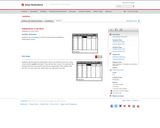
Texas Instruments activity where students use a simulation to find the experimental probability of independent events.

Practice worksheet with independent and dependent events.
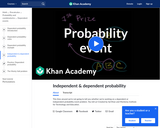
This Khan video explains independent versus dependent events.

This lesson is designed to introduce conditional probability by building on students' prior knowledge of probability. The lesson focuses on showing the entire sample space to find conditional probabilities. The lesson incorporates examples with Venn diagrams and two-way tables. It wraps up with a definition of independent events.

This is a project that follows the PBL framework and was used to help students master the fundamentals of probability, specifically the laws of probability (NC.M2.S-CP.1 to 8). Note that the project was designed and delivered per the North Carolina Math 2 curriculum and it can be customized to meet your own specific curriculum needs and resources.
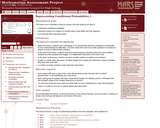
This lesson unit is intended to help teachers assess how well students are able to: Understand conditional probability; represent events as a subset of a sample space using tables and tree diagrams; and communicate their reasoning clearly.

This video includes four worked out examples dealing with probability. The video includes Addition Rule of Probability, Multiplication Rule and Conditional Probabilities.

Lesson where students will understand conditional probability.

This lesson unit is intended to help you assess how well students are able to understand conditional probability, represent events as a subset of a sample space using tables and tree diagrams, and communicate their reasoning clearly.
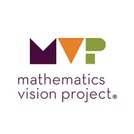
The purpose of this task is for students to practice determining whether one event is independent of another event. Students will use data from different representations, plus make sense of whether or not one scenario would be independent of another. In the end, students will explain how to quickly determine independence from a Venn diagram, a tree diagram, and a two-way table.

In this Khan Academy activity, students will use two way tables to answer problems in context.

Class activity that teaches students about independent and conditional probability using the Multiplication rule